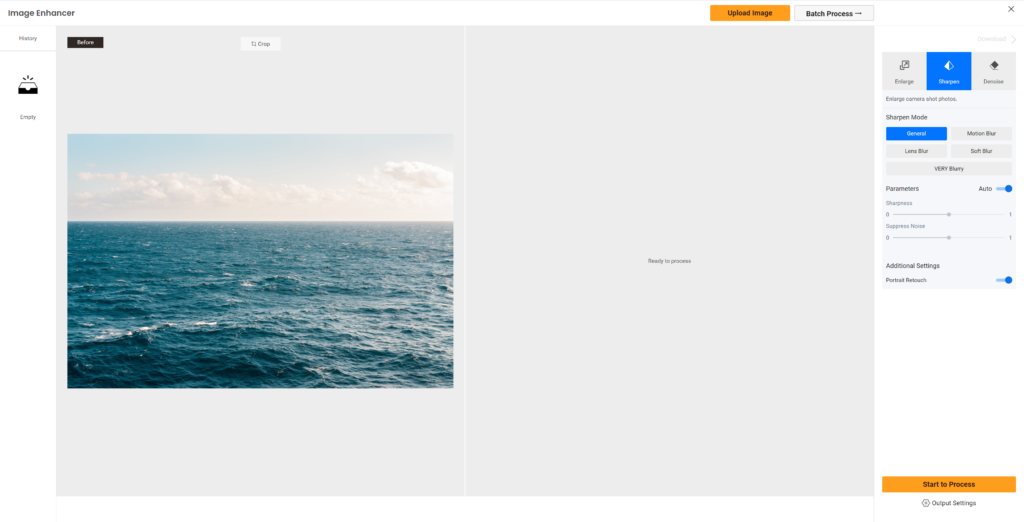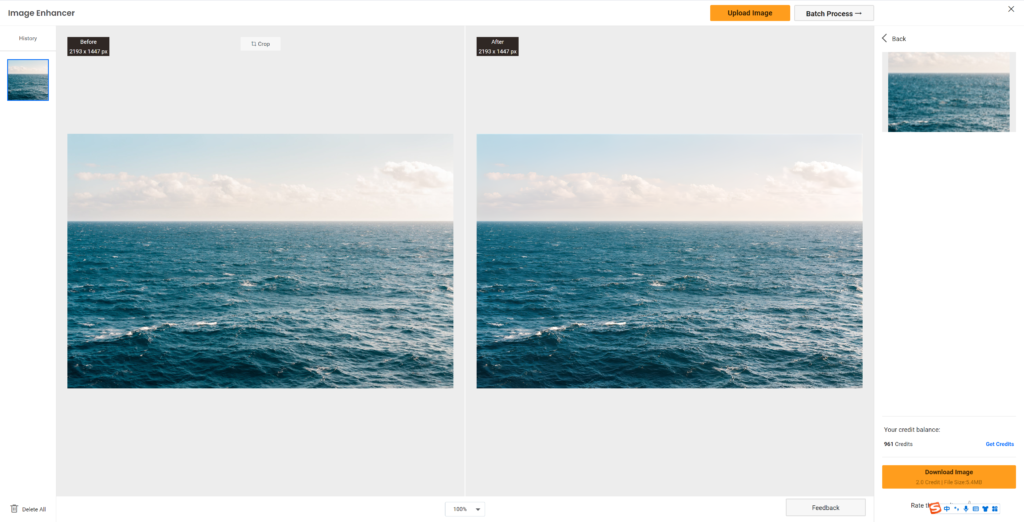Evolving Trends in AI Image Enhancement
Smartphone photography has grown in popularity in the digital age as a result of mobile devices’ convenience and accessibility. However, producing amazing photographs on a smartphone can be difficult at times, particularly when it comes to attaining the best clarity and detail possible. Traditional sharpening methods frequently fail to produce sufficient results, necessitating the development of AI-powered picture improvement solutions.
Integration of Advanced Camera Hardware
VanceAI Image Sharpener is ready to transform smartphone photography by taking advantage of modern smartphones’ powerful hardware capabilities. Smartphones, with their multi-lens camera systems, high-resolution sensors, and powerful image processing units, provide an ideal environment for AI-driven image augmentation technologies to thrive. Manufacturers can enable customers to easily shoot clearer, more detailed photographs by embedding AI image sharpening algorithms directly into smartphone camera hardware.
Expansion of AI-Powered Features in Smartphones
The incorporation of AI-powered features in smartphones is not limited to image sharpening, but also to other aspects of photography and beyond. From scene identification and subject tracking to portrait mode and night mode, AI algorithms are increasingly being employed to improve the whole photography experience on smartphones. As AI technology advances, we may expect to see more advanced and intelligent capabilities implemented into future smartphone cameras.
Collaboration of AI Developers and Smartphone Manufacturers
The partnership between AI developers and smartphone makers is critical to drive innovation in smartphone photography. Working closely together, AI engineers can get insights into the unique requirements and restrictions of smartphone hardware, allowing them to optimize their algorithms for optimal performance and efficiency. In contrast, smartphone makers can deploy cutting-edge AI technologies to differentiate their products and provide users with greater shooting experiences.
Potential Improvements in Image Sharpening Technology
Looking ahead, the future of AI image sharpening holds great promise for smartphone photography, with several major advancements on the way.
The incorporation of augmented reality elements
One promising area of advancement is the introduction of augmented reality (AR) features into AI picture sharpening algorithms. AR-powered sharpening algorithms can augment the visual information acquired by smartphone cameras by superimposing virtual enhancements on real-world images, adding depth, dimension, and interactivity to photos. This immersive experience gives smartphone photographers more creative choices and improves the overall storytelling potential of their photographs.
Real-Time AI Image Sharpener for Smartphone Cameras
Another key innovation in smartphone cameras is real-time AI picture sharpening, which has the potential to alter the way we record and edit photos on mobile devices. Smartphones can provide users with quick feedback by executing image sharpening directly on camera hardware in real time, allowing them to evaluate and change image sharpness on the go. The seamless integration of AI image sharpening into the photography workflow allows users to create wonderfully crisp photographs with each shot.
Cross-Platform Integration and Cloud Solutions
Cross-platform integration and cloud-based solutions provide new ways to deploy AI image sharpening technologies across a variety of devices and platforms. Smartphones can use the cloud’s computational capabilities to offload costly image processing chores to remote servers, allowing more complex and resource-consuming sharpening algorithms to be run. This cloud-based solution allows for seamless synchronization of image sharpening settings across numerous devices, ensuring a uniform photographic experience across the board.
Feedback Loops for Continuous Improvement.
Feedback loops between consumers and developers are critical to fostering continual improvement and refinement in AI picture sharpening technologies. By collecting user feedback and implementing it into future algorithm iterations, engineers can ensure that AI image sharpening solutions adapt to meet the changing demands and preferences of smartphone photographers.
AI Image Sharpening for Professional Photography
While AI image sharpening has important implications for smartphone photography, its effects reach far beyond the consumer market. AI-driven image sharpening technology is transforming the way professional photographers take and process photographs, opening up new creative possibilities and raising image quality standards.
Using VanceAI Image Sharpener to Sharpen a Picture
Selecting Your Image
Selecting an image using VanceAI Image Sharpener is simple. Begin by choosing an image from your computer or a favorite cloud storage provider that you wish to edit. The tool will function with your files because it supports a variety of image formats.
Choose a mode.
After uploading your photo, choose the finest settings to enhance it. Examine your shot to ensure it is not blurry, out of focus, or fuzzy. For the best results, select the suitable choice for VanceAI Image Sharpener. This feature is also available at the VanceAI Image Enhancer office.
Start downloading and processing.
After selecting your options and uploading your photo, all you have to do is click once to view the results. The VanceAI Image Sharpener’s AI algorithms swiftly evaluate your photo and make the appropriate improvements. In a matter of seconds, your blurry snapshot will be transformed into a sharp, clear work of art. Following that, you can simply save it to your smartphone.
AI Image Sharpening for Professional Photography
While AI image sharpening has enormous potential for smartphone photography, its application extends far beyond consumer-grade devices. In the professional photography market, AI image sharpening has the potential to transform how photographers capture, edit, and deliver high-quality photographs to clients.
Applications in Professional Photography Settings
In professional photography settings, where image quality and sharpness are critical, AI image sharpening can assist photographers in producing remarkable outcomes with better speed and consistency. By automating labor-intensive processes such as image retouching and sharpening, AI algorithms allow photographers to devote more time and energy to creative decision-making and artistic expression, resulting in a more efficient workflow and higher-quality output.
Collaboration of AI and Professional Photographers
Collaboration between AI developers and professional photographers is critical to the adoption and enhancement of AI image sharpening technologies in professional photography processes. By requesting feedback from photographers and incorporating their insights into the development process, AI developers may ensure that their algorithms satisfy the high standards of professional photographers while also providing significant benefits in terms of image quality, productivity, and creativity.
Impact on the Photography Industry.
The broad implementation of AI image sharpening in the photography business is predicted to have a significant impact on how photographs are acquired, processed, and distributed. As AI algorithms become more advanced and accessible, they have the potential to democratize professional-level image editing tools and processes, allowing photographers of all skill levels to effortlessly generate breathtaking, razor-sharp photographs.
Also Read=How to Get the URL of an Image
Conclusion
To summarize, AI image sharpening offers a dramatic leap in smartphone photography, allowing people to capture sharper, more detailed photographs with their mobile devices. Smartphone makers can provide customers with better photography experiences by employing AI technology, while AI developers may push the limits of image quality and creativity. As AI image sharpening evolves and matures, it has the potential to uncover new creative opportunities and reshape the future of smartphone photography.

James Oliver is a professional blogger and a seasoned Content writer for technologyspell.com. With a passion for simplifying technology and digital topics, he provides valuable insights to a diverse online audience. With four years of experience, James has polished his skills as a professional blogger.








